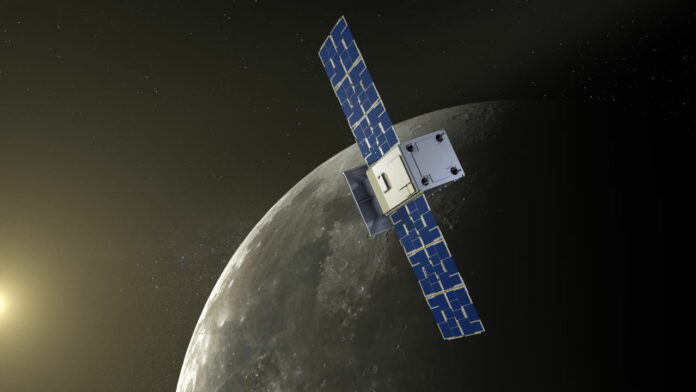NASA confirmed late on Sunday that the Cislunar Autonomous Positioning System Technology Operations and Navigation Experiment (CAPSTONE) spacecraft has arrived at its orbit(Opens in a new window) at the Moon.
This mission counts as the first time a CubeSat has operated at the Moon, but also the first spacecraft to fly in a near-rectilinear halo orbit (NRHO). Currently, the NRHO isn’t perfect, but NASA expects it to be by Friday after two additional clean-up maneuvers are performed to “refine its orbit.”
CAPSTONE(Opens in a new window) weighs 55 pounds and is roughly the same size as an oven. It was launched as a pathfinder for the Moon-orbiting outpost called Gateway, which will eventually form part of the Artemis program. CAPSTONE is expected to validate whether a halo-shaped orbit works and remains stable, while also testing “innovative navigation technologies” involving spacecraft-to-spacecraft navigation.
NRHO is important because the elongated orbit uses a precise balance point between the gravity of the Earth and Moon, which means much less energy/propulsion is required to maintain that orbit. Testing will be performed for at least six months and communications established with the Lunar Reconnaissance Orbiter (LRO)(Opens in a new window) to allow for precise positioning feedback of the CubeSat.
Recommended by Our Editors
NASA’s hope is that the NRHO is proven to be stable for future long-term Moon missions, but also that the Cislunar Autonomous Positioning System (CAPS) navigation software CAPSTONE uses proves reliable and accurate. If it is, then future spacecraft will be able to determine their own location without relying on a link back to Earth.
Get Our Best Stories!
Sign up for What’s New Now to get our top stories delivered to your inbox every morning.
This newsletter may contain advertising, deals, or affiliate links. Subscribing to a newsletter indicates your consent to our Terms of Use and Privacy Policy. You may unsubscribe from the newsletters at any time.
Hits: 0















